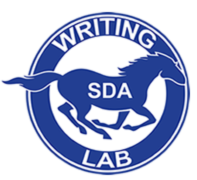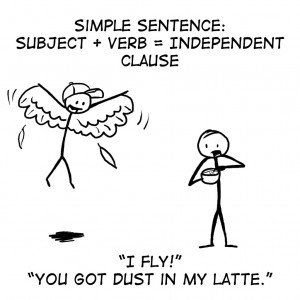During your time in school, you’ve probably seen sentences written by famous authors that have the same mistakes in them for which your teachers have marked you down. Maybe the sentences go on too long and don’t have commas in the right places, or maybe the sentences use semicolons in a weird way, or maybe some of the sentences just don’t make sense at all. You’ve probably thought to yourself, If they can do it, why can’t I? So how come the Hemingways and Faulkners of the world can throw a bunch of words and punctuation on a page and win a Nobel Prize while you get stuck with a C+?
It’s because they’re famous. Kinda.
Many of us assume that famous writers already know how to write correctly and that when they do something unconventional, it’s on purpose. It probably isn’t fair to make such an assumption, but who’s going to call those writers out? (We’re talkin’ about freakin’ Hemingway here, man!) Sure, just because they are famous writers doesn’t make them right, but it does mean that any one of them could probably spell his or her own name wrong and half the people in the world would call that writer a genius for doing so. (1)
Unfortunately for you, most of your teachers aren’t looking to see how creatively you can bend or break the longstanding rules that crotchety old grammatical institutions have valued for centuries; they just want to see that you know how to write correctly. So before you can wow the world with your…::cough::…original use of commas, you have to show them that you know what you’re doing. You have to know the basics. It is only after you can show that you’ve learned these simple rules that teachers may start to appreciate that abstract masterpiece of a style analysis essay you skillfully threw together at 2 AM on some random Tuesday night.
So let’s begin.
The first type of sentence you should know how to put together is the most basic one. This sentence is made up of two essential parts: the subject and the verb (or predicate). The subject is the person/place/thing/whatever that is doing something. The verb is the action being done. In a simplified sense, the predicate is that part of the sentence that is not the subject that includes the verb and what the verb is governing or what is modifying it. Sentences can get more complex and wacky than this, but let’s just start with this basic concept for now.
In the example above, ‘I’ would be the subject and ‘fly’ would be the verb. That’s it! That’s all it takes to make a simple sentence. You can also have longer simple sentences, such as You got dust in my latte. ‘You’ is the subject and ‘got’ is the verb. If you’re having trouble finding the subject (the who, or what) of a sentence, just look for the verb (action being done), and then see who or what is doing it. Sometimes the subject is implied, such as in the sentence Stop! ‘Stop’ is the action, and it is implied that the person being told to stop is the subject, such as in “Stop, you jerk!” (<-I like to imagine it’s probably a New Yorker yelling this)
Wow, even working on basic sentences can get pretty complicated, no?
We’ll follow up this post with the next type of sentence: the Compound Sentence. Feel free to ask questions in the comments section. We’ll do our best to answer them. (To help prevent spam, all comments must be reviewed by the Lab before they will show up in the comments section, so there’s no need to stress if you send a comment and it doesn’t show up instantly. Please give us a day or two to filter through them, or send us an email at **sdawritinglab(at)gmail.com**)
Thanks for reading!
-Your Humble SDA Writing Lab
(1) The authors of this Writing Lab blog reserve this same right, known in our contracts as the “genius” clause (or “genious” clause), to be held completely unaccountable for any supposed mistakes that we make. If we messed up, then we did it on purpose. For creative reasons. So there.

